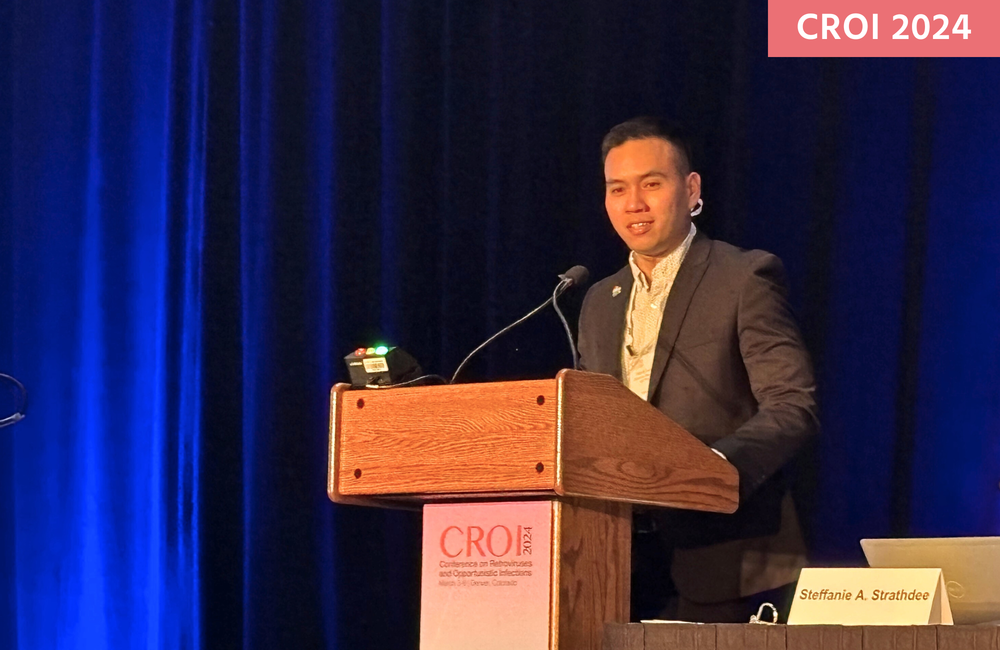
While 1 in 3 people who inject drugs were aware of PrEP in 2022, only 1 in 100 actually took it. Despite changes in PrEP awareness between 2018 and 2022, increases in uptake for this vulnerable group were small, according to data presented to the Conference on Retroviruses and Opportunistic Infections (CROI 2024) earlier this month in Denver by Dr Patrick Eustaquio.
Background
Efforts to increase PrEP uptake in the US have mainly focused on gay and bisexual men, who remain most impacted by the US epidemic. However, this may lead to other groups – such as people who inject drugs – slipping through the cracks. There are few specific PrEP programmes aimed at people who inject drugs, despite their increased risk for acquiring HIV.
This is concerning as people who inject drugs are one of the few key populations where progress has stalled in the US: there were more new HIV diagnoses for this transmission category in 2021 than there were in 2019.
According to 2018 National HIV Behavioural Surveillance data, only 1% of people who inject drugs had used PrEP in the previous year. There has been little research investigating changes in both PrEP awareness and uptake over time for this group.
The study
Researchers at the Centers for Disease Control and Prevention (CDC) compared 2018 and 2022 National HIV Surveillance data. These data contained information from HIV-negative people who inject drugs in 19 US cities from across the country, including large metros such as New York City, Los Angeles, Washington DC, Chicago, and Houston.
These studies use a sampling method that is reliant on social networks, and incentives are usually provided for participation and recruitment of others. There were 9118 people surveyed in 2018 and 6058 surveyed in 2022.
Researchers were concerned with two main outcomes: changes over time in PrEP awareness and uptake.
Changes in PrEP awareness have not translated into increased uptake
Overall PrEP awareness in the samples increased from 26% in 2018 to 35% in 2022. However, PrEP use remained stable at 1.2% over that period.
This translated to a 40% relative increase in PrEP awareness between 2018 and 2022 (adjusted Prevalence Ratio = 1.4, 95% Confidence Interval: 1.3 to 1.5, p <0.01).
A closer look at PrEP awareness showed significant changes for all age, gender, and race/ethnicity groups, as well as all risk categories: people who used a needle to inject that had been used by another person, shared injection equipment in some other way, had either condomless vaginal or anal sex, had had a bacterial STI, received an HIV test, and engaged in gay male sex during the previous year.
For instance, while 44% of people who had had gay sex during the past year in 2018 stated that they were aware of PrEP, 57% reported the same in 2022. In terms of demographic categories, overall, transgender people were more aware of PrEP than cisgender people in both 2018 and 2022 (with a 16% increase over time), while the same was true for White people when compared to other race/ethnicity groups. White people who inject drugs had a 14% increase in awareness over time, compared to smaller increases for other groups. The largest increase in awareness by age group was for people aged 30 to 39, a 14% increase.
However, when it came to PrEP use over the previous year, there were only significant increases in three categories: people who used a needle to inject that had been used by another person, or people who had otherwise shared injection equipment, and people who had received an HIV test in the previous year. While these changes were statistically significant, they were very small.
Conclusion
“There have been consistent increases in PrEP awareness across different subgroups of people who inject drugs. This shows that PrEP messaging is reaching groups with a greater risk of HIV acquisition. Yet, changes may be due to a generalised increase in awareness overall,” Eustaquio concluded.
“However, PrEP use has remained stable and suboptimal over time. Some subgroups – such as people who inject drugs at a higher risk of acquiring HIV and those who obtained HIV testing – did experience significant increases in PrEP use… Efforts to improve PrEP messaging, provider training, and access specifically for people who inject drugs may serve to further increase both PrEP awareness and use.”
Eustaquio P et al. Changes in HIV PrEP Awareness and Use Among PWID in 19 US Cities, 2018 and 2022. Conference on Retroviruses and Opportunistic Infections, Denver, poster 995, 2024.
